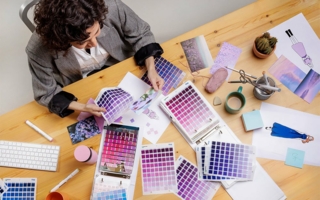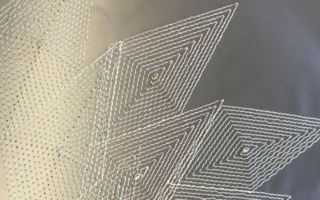06/08/2020 – PPE gap — auf Deutsch lesen
Covid-19: US-based textile companies join forces
Bolger & O’Hearn, ColorWorks and Merrow Manufacturing, Inc. collaborate to make thousands of units of PPE (personal protective equipment).
Faced with a global pandemic and massive Personal Protective Equipment (PPE) shortages in the United States, three large textile companies – each strong in its own niche – banded together quickly this spring to help fill the nation’s explosive demand for personal protective equipment (PPE). The result was a fast response to PPE needs and an ongoing relationship that promises to help the country continue to meet growing demand for PPE across multiple sectors of the economy as the fight against the Covid-19 pandemic continues.
The collaboration included Merrow Manufacturing, Inc., ColorWorks and Bolger & O’Hearn, Inc.
Merrow Manufacturing is a massive, high-tech cut and sew operation based in Fall River, Mass., typically used by fashion and textile brands to make hard and soft textile goods.
Bolger & O’Hearn, also based in Fall River, provided the high-powered durable water repellents designed to repel oil, water and blood when applied to PPE fabrics, as well as other textile chemistries needed to meet ASTM requirements for Levels 1, 2, and 3 for medical PPE. A bluesign system partner, B&O is also known for developing chemical products based on environmentally-compliant materials and technologies. ColorWorks, which is located in Elizabethton, Tenn., took charge of the dyeing and finishing of millions of yards of fabric used to make the PPE. ColorWorks was purchased in January (2020) by Ocean State Innovations (OSI), which is based in Portsmouth, Rhode Island.
Bryan Boulis, president of OSI:
“OSI has a long history working with both Bolger & O’Hearn and Merrow,. ColorWorks relies heavily on the support of the R&D talent at Bolger. In March of this year I reached out to Charlie Merrow (CEO of Merrow Manufacturing) in regard to his efforts to fill the PPE void both locally (for hospitals in New England) and throughout North America. Charlie presented his specifications and my team immediately reached out to Bolger & O’Hearn. ColorWorks has used 100 percent Bolger & O’Hearn products on all of the woven products we shipped to Merrow.”
In normal times, Merrow is a large domestic manufacturer of soft goods. Family owned, and in operation since the late 1800’s, Merrow invented the overlock stitch and its manufacturing floors in Fall River are typically humming with the sound of up to 500 sewing machines and a small army of high precision fabric cutters. Earlier this year, in response to the Covid-19 pandemic, Merrow quickly pivoted and focused their textile cut and sew expertise on meeting New England’s sudden, urgent need for medical isolation gowns. In less than two months, Merrow quickly became one of the largest manufacturers of PPE in North America and through collaborations with Bolger & O’Hearn and ColorWorks, as well as Dupont, Merrow has, since March, manufactured millions of units of PPE. Their work has been so critical to the safety of New England residents, that Merrow was recognized by Rhode Island’s governor, Gina Raimondo, in an address to the state this spring. Bolger & O’Hearn’s R&D group has a long history of working with brands and mills throughout the US textile industry, developing custom chemistries designed to give their customers a competitive edge. Since March at the beginning of the pandemic, much of this work has focused on developing high powered durable water, oil and soil repellents used to manufacture items of PPE that meet Levels 1,2 and 3 requirements for medical PPE.
Kelly Murphy, Co-President of B&O:
“Bolger & O’Hearn is proud to be at the forefront of the effort to rebuild the US textile industry’s PPE supply chain, and support brands and mills throughout the US, by developing the chemistries that help them meet our country’s urgent demands for medical gowns, curtains, lab coats and other essential items of medical PPE. With like-minded people working together, the possibilities of what we can achieve in the face of this pandemic are limitless. The push for personal protective equipment is not going away anytime in the near future.”




